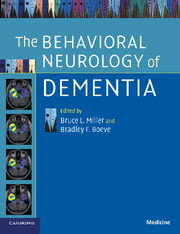Book contents
- Frontmatter
- Contents
- List of contributors
- Section 1 Introduction
- Section 2 Cognitive impairment, not demented
- Section 3 Slowly progressive dementias
- Section 4 Rapidly progressive dementias
- 23 Prion disorders and other rapidly progressive dementias
- 24 Delirium masquerading as dementia
- 25 Paraneoplastic disorders of the memory and cognition
- Index
- References
24 - Delirium masquerading as dementia
Published online by Cambridge University Press: 31 July 2009
- Frontmatter
- Contents
- List of contributors
- Section 1 Introduction
- Section 2 Cognitive impairment, not demented
- Section 3 Slowly progressive dementias
- Section 4 Rapidly progressive dementias
- 23 Prion disorders and other rapidly progressive dementias
- 24 Delirium masquerading as dementia
- 25 Paraneoplastic disorders of the memory and cognition
- Index
- References
Summary
Delirium is one of the first mental disorders to be described in the ancient literature. Nearly 2500 years ago, Hippocrates detailed a syndrome of acute, fluctuating confusion that we would today term delirium. Unfortunately, this common disorder remains largely unrecognized and understudied in modern times, even by neurologists and psychiatrists, despite its staggering morbidity and costs to society.
Delirium is a relatively distinct clinical entity, and its recognition is an important step in the work-up of suspected dementia, especially given the tendency of delirium to be caused by potentially reversible disorders. Review of the literature on delirium is complicated by multiple synonyms for this condition including “acute confusional state,” “encephalopathy”, “acute brain failure” and “postoperative or intensive care unit (ICU) psychosis.”
Definitions of delirium used for clinical descriptions as well as for research have varied widely. At the core of these descriptions lies an impairment of cognition across multiple domains, particularly attention, that has an acute onset and fluctuating course. This definition would seem to delineate delirium from the more chronic dementias, but these boundaries can be blurred when the delirium is long standing or when the features of a dementia resemble delirium such as is often found in patients with dementia with Lewy bodies (DLB) or late-stage dementias. The most widely used formal research criteria for delirium is found in the Diagnostic and Statistical Manual of Mental Disorders (DSM-IV-TR) and is shown in Box 24.1.
- Type
- Chapter
- Information
- The Behavioral Neurology of Dementia , pp. 367 - 376Publisher: Cambridge University PressPrint publication year: 2009



